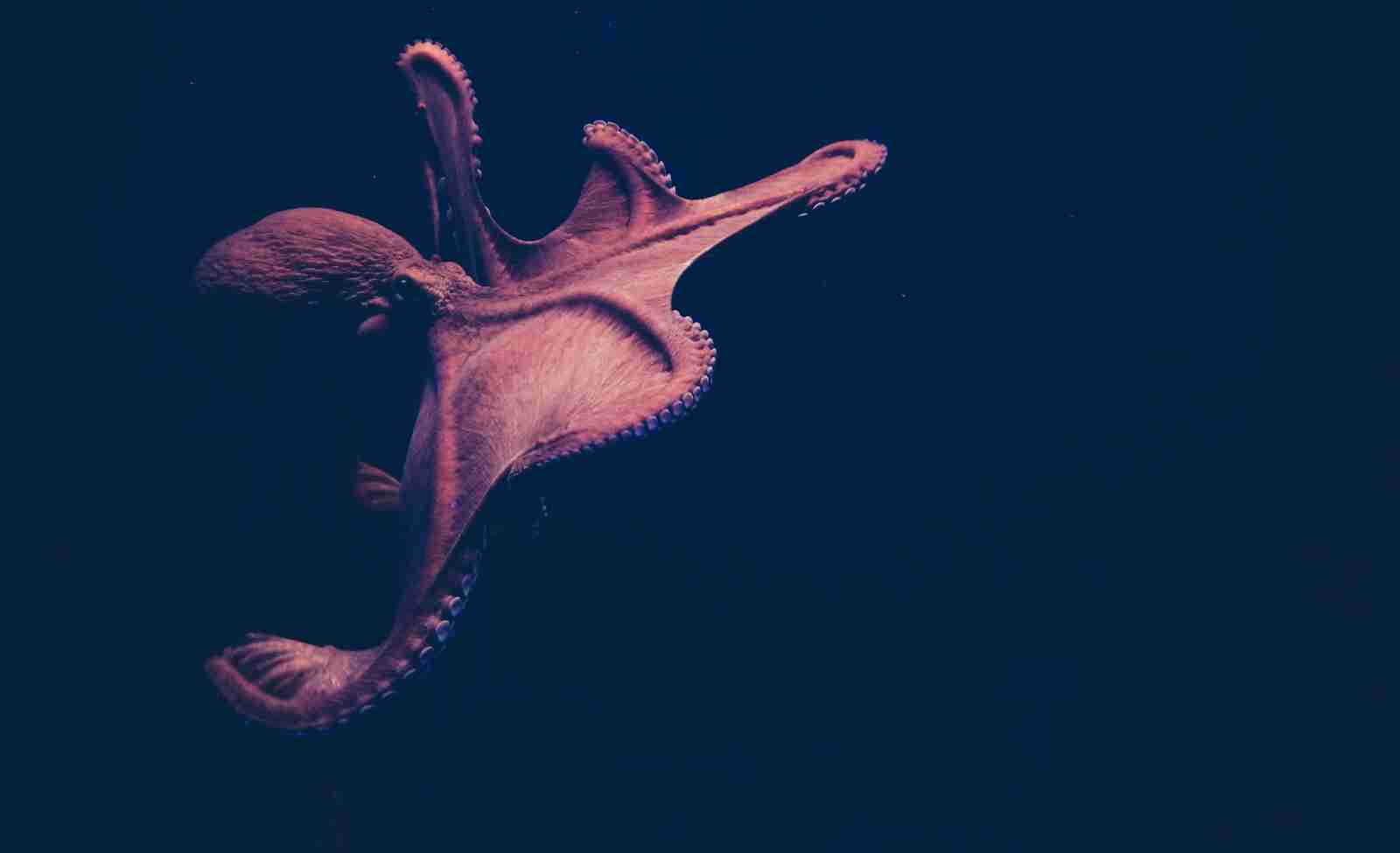26 Fun Facts About Octopus | Jump into Marine Marvels
1. Octopuses have three hearts.
Ever felt your heart race? Now, imagine feeling that with three hearts. Octopuses have this unique setup. They’re equipped with three hearts two are dedicated to pumping blood through the gills, ensuring they get enough oxygen.
The third heart? It’s working hard to send that freshly oxygenated blood throughout the rest of the body. It’s like having a dedicated team just for circulation.
2. The octopus’s blood is blue.
Our human hearts pump red blood, but an octopus? It’s all about the blue. Why? It’s because of hemocyanin, a molecule they have instead of our hemoglobin.
While our blood uses iron, making it red, octopuses rely on copper, giving their blood a deep blue shade. So, if you ever spot an octopus, remember they aren’t just unique outside, but inside too.
3. Octopuses can taste with their arms.
If you could taste things with your hands, would you touch everything? Well, octopuses do just that. Each of their arms is packed with taste receptors.
Whether it’s exploring a new object or catching prey, they’re tasting their surroundings every moment. So, the next time you dip your fingers in some sauce, imagine if you could actually taste it without a lick.
4. An octopus can change color in milliseconds.
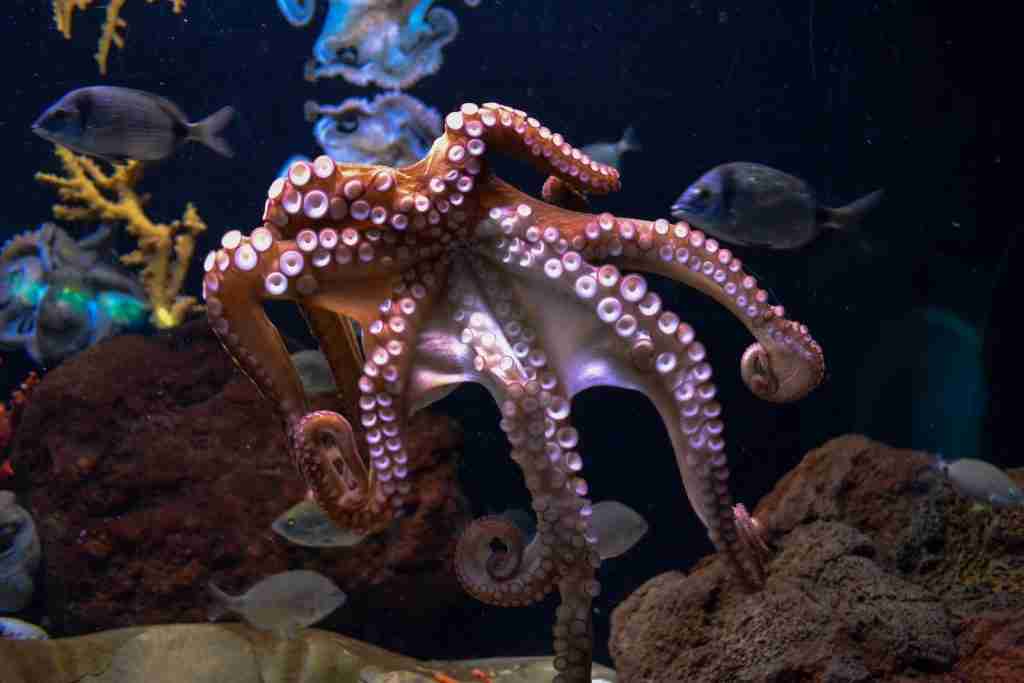
Fun facts about octopus abilities. Ever seen a chameleon change colors? Octopuses take it to the next level.
In just milliseconds, they can shift their hue to blend with their environment or express emotions. It’s like having a living, breathing mood ring.
5. Octopuses are boneless.
Here’s one of the most mind-blowing fun facts about octopus anatomy, they’re boneless. This means they can squeeze through super tiny openings, making them expert escape artists.
Imagine being so flexible that even the tiniest gap becomes a doorway.
6. The largest octopus species is the Pacific Giant Octopus.
Fun facts about octopus giants. The Giant Pacific Octopus is truly in a league of its own. While other octopus species might impress, none grow as large or live as long as this one.
A massive creature spanning 30 feet and tipping the scales at over 600 pounds. But on average, you might spot one that’s around 16 feet and weighs about 110 lbs. They’re the titans of the octopus world.
7. Octopuses can regrow lost arms.
Losing an arm sounds scary, right? But for octopuses, it’s just a hiccup They can regrow lost arms.
And here’s the wild part even after detachment, those arms can still react, It’s as if they have a mind of their own.
8. Female octopuses can lay up to 400,000 eggs.
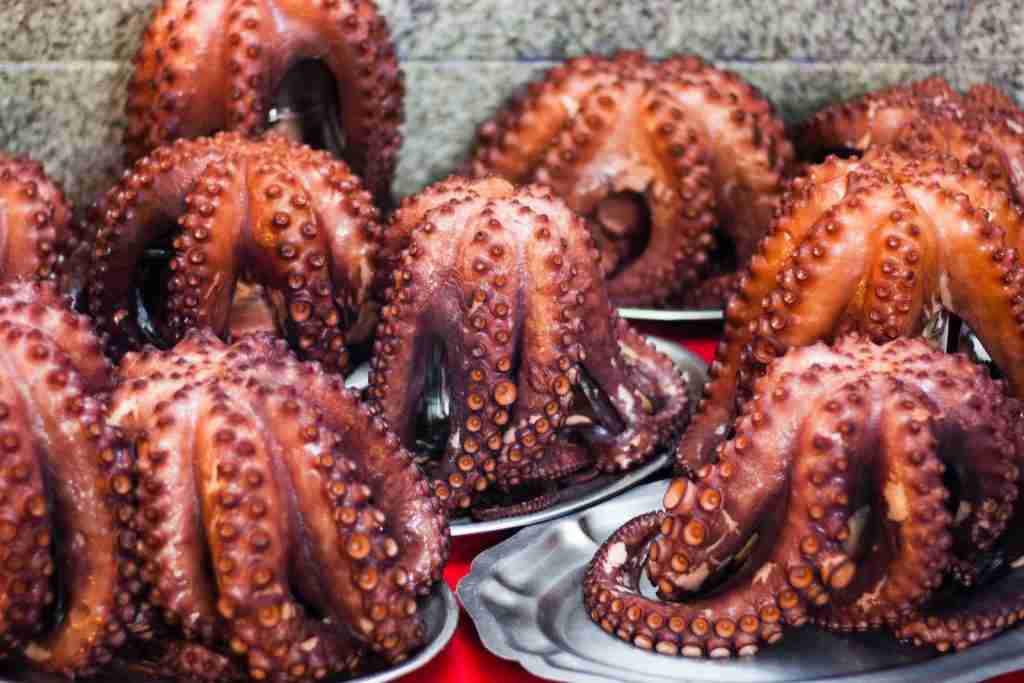
Speaking of astonishing feats, did you know female octopuses are incredibly prolific mothers? They can lay up to a staggering 400,000 eggs. It’s like a whole city of baby octopuses waiting to hatch.
Now that’s some serious dedication to the next generation.
9. The octopus’s brain is doughnut-shaped.
Now, if you thought you’d heard all the fun facts about octopus quirks, here’s a zinger. Their brain is shaped like a doughnut. Yep, you read that right.
Imagine thinking of something that resembles your favorite morning treat. Makes you wonder what goes on in there, doesn’t it?
10. Octopuses use jet propulsion by forcefully expelling water from their mantle.
In the underwater ballet of octopus movement, they employ an elegant technique known as jet propulsion. By drawing water into their soft mantle cavity and then forcefully expelling it, these creatures become aquatic acrobats.
This method allows them to glide with a mix of grace and power, helping them chase prey, escape predators, and navigate their watery world with finesse.
11. The octopus has a beak similar to a parrot’s.
Now, when picturing an octopus, a beak might not be the first thing that comes to mind. But surprise. They have a beak that’s strikingly similar to a parrot’s.
Nestled underneath all those arms, this sharp tool helps them crack open and eat their prey. Think of it as their secret weapon hidden beneath the waves.
12. Octopuses can eject ink to escape predators.
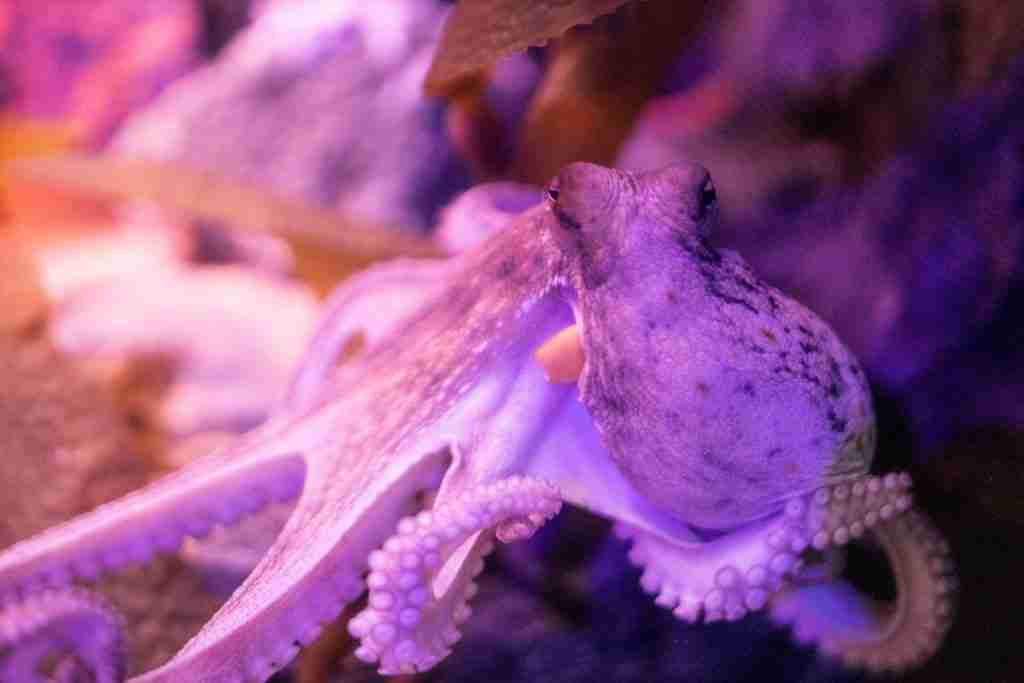
In the vast ocean, an octopus needs a reliable escape plan, and ink is its go-to move. But it’s not just any ink it contains a special substance that messes with predators’ sense of smell.
So, not only does it create a smokescreen, but it also confuses their pursuers. Talk about a double-defense strategy.
13. The octopus’s skin can heal itself, even from deep wounds.
Ever wished you could heal like a superhero? Octopuses are a step ahead! Their skin has this remarkable ability to heal, even from deep cuts and gashes.
No need for band-aids in their world. They just patch up naturally and move along, proving nature’s resilience once more.
14. The octopus’s lifespan is typically short.
Here’s a touching aspect of octopus facts: Even with all their incredible abilities and traits, octopuses usually have a lifespan ranging from just 1 to 5 years.
It’s a short period, especially when you consider the vast ocean they inhabit. But in that time, they live intensely, making each moment count in their underwater world.
15. Octopuses are considered highly intelligent.
When we think of intelligent animals, we might consider dolphins or chimps. But octopuses? They deserve a spot on that list. With problem-solving abilities, learning skills, and even playing with toys, they’ve wowed scientists everywhere.
It’s a reminder that intelligence has many forms in the natural world.
16. Octopuses often decorate their dens.
Just like we love to personalize our homes, octopuses do too. They often decorate their dens with shells, rocks, and other sea trinkets.
It’s not just about protection. it’s about making their space feel just right. A cozy underwater home, tailored to taste.
17. predators of octopuses encompass species such as sharks, seals, sea otters, and larger octopuses.
When exploring the marine world, it’s evident that even the crafty octopus has its foes. Predators of octopuses include cunning sharks, playful seals, resourceful sea otters, dolphins, and even larger octopuses.
The underwater realm is full of intricate food webs, and our eight-armed friend has to stay vigilant.
18. Octopuses possess a complement of eight distinct arms.
The term octopus originates from Greek, combining words for eight and foot. And for a good reason. Fun facts about octopus anatomy always highlight their eight distinctive arms, each one serving a unique purpose.
So, when you see one, remember, it’s not just tentacles but eight remarkable limbs lending their name.
19. One of the fun facts about Octopusis is that Octopuses can walk on two arms.
When you think of octopuses, you might imagine them swimming gracefully. But here’s a fun twist: they can also walk on two of their arms.
Imagine strolling along the ocean floor with two legs it’s a quirky skill that showcases their adaptability.
20. The octopus is a cephalopod.
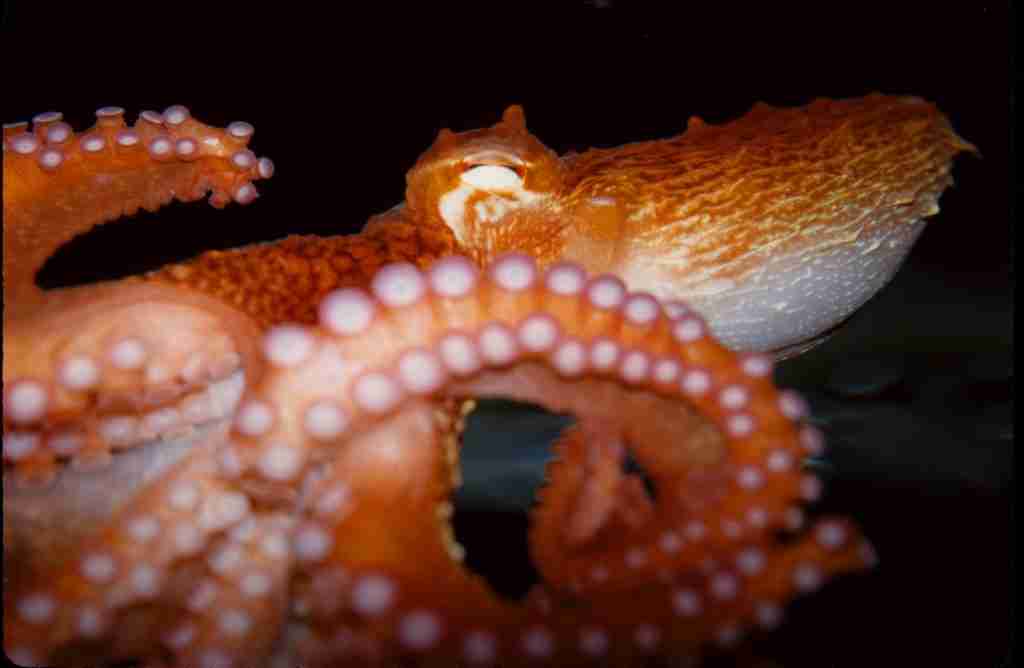
Octopuses belong to the cephalopod family, and their eating habits are intriguing. They have a taste for crustaceans, which are like oceanic snacks to them.
From crabs to shrimp, these are the delicacies that fuel their underwater adventures.
21. Octopuses have been found in depths exceeding 10,000 feet.
Dumbo Octopuses have showcased their incredible endurance, as they’ve been found thriving at astonishing depths, venturing beyond the remarkable 10,000 feet mark.
It’s a testament to their ability to adapt to extreme environments and thrive in places where few can venture.
22. Male octopuses typically die shortly after mating.
Here’s a fascinating nugget among fun facts about octopuses: male octopuses often meet their fate shortly after mating. It’s a sort of self-sacrifice that helps the species survive.
This phenomenon, called semelparity, means these males put all their energy into fertilizing eggs, and then their health takes a nosedive.
23. Octopuses don’t have vocal cords.
In the kingdom of oceanic chatter, octopuses have their own unique way of staying quiet. Unlike many creatures, they don’t have vocal cords.
Instead, they communicate through a range of physical movements, color changes, and even touch. It’s a silent symphony beneath the waves.
24. Octopuses are colorblind.
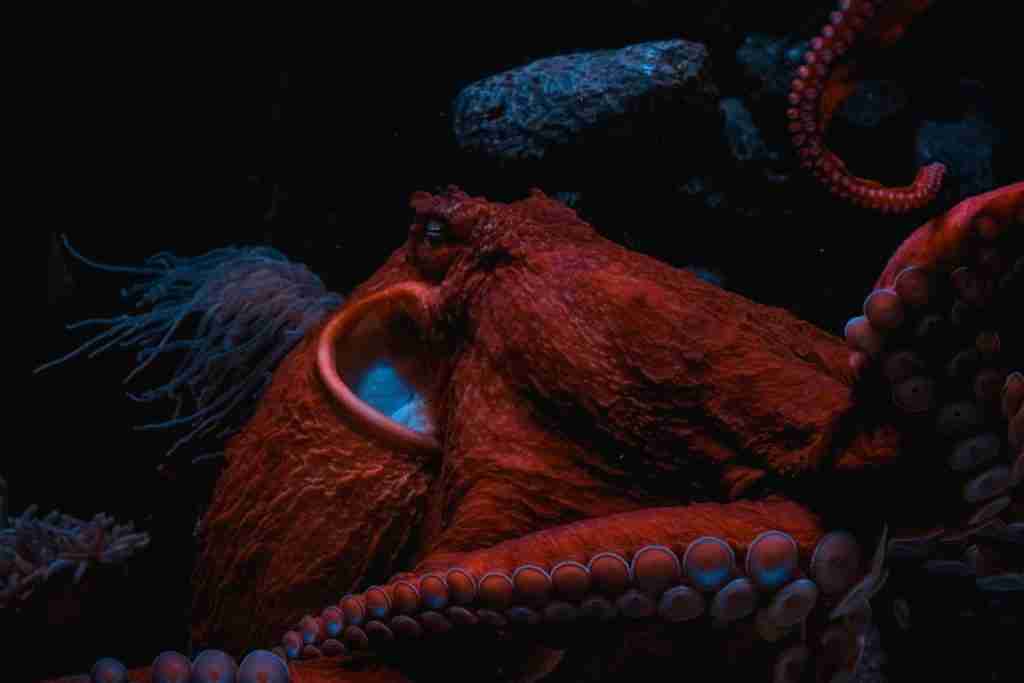
While octopuses have impressive eyesight, one intriguing aspect stands out they’re colorblind. That vibrant palette of the underwater world? They perceive it quite differently.
It’s like viewing a mesmerizing painting in shades of gray, adding a unique twist to their perception of the ocean’s beauty.
25. The octopus’s pupils are rectangular.
Among the intriguing fun facts about octopus eyes, their pupils stand out shaped like rectangles rather than the usual circles. Imagine the world through such unconventional windows.
This unique feature helps them adapt to various light conditions in their underwater realm.
26. Octopuses are mainly nocturnal.
When the sun sets and darkness falls, octopuses come to life. They’re mainly nocturnal creatures, preferring to explore, hunt, and engage in their underwater activities under the cover of night.
It’s a world where they truly shine, showcasing their remarkable abilities in the moonlit depths.
FAQs
Octopuses are generally not considered dangerous to humans. While some species possess venom and a few have bites that can cause discomfort, they usually only use these defenses in response to threats. Most octopuses are timid creatures that prefer to flee rather than engage in confrontations with humans.
Octopuses don’t have tongues like humans do. Instead, they have a specialized structure called a radula, which is a rough, tongue-like organ with tiny teeth. The radula helps them grasp and tear apart their prey, enabling them to feed on a variety of foods. This unique adaptation showcases their incredible ability to thrive in their underwater world.
Octopuses have a distinct sleep pattern characterized by short rest periods. During these intervals, they often change color and texture, displaying a unique form of restfulness. Unlike human sleep, octopuses remain alert even while resting, adapting to their underwater environment where staying vigilant is crucial for survival.
Octopuses mate at different times based on their species and environment. Generally, mating can occur throughout their relatively short lifespans, which typically span from 1 to 5 years. Some species mate shortly before they die, while others mate multiple times during their lives. The timing of octopus mating is influenced by factors such as environmental conditions and their natural reproductive cycles.
Octopuses have diverse diets that often include crustaceans like crabs and shrimp. They’re skilled hunters, using their intelligence and agility to catch prey. Their taste preferences can vary based on their species and habitat, but octopuses generally have a carnivorous diet, indulging in a range of marine delicacies that suit their underwater lifestyle.

